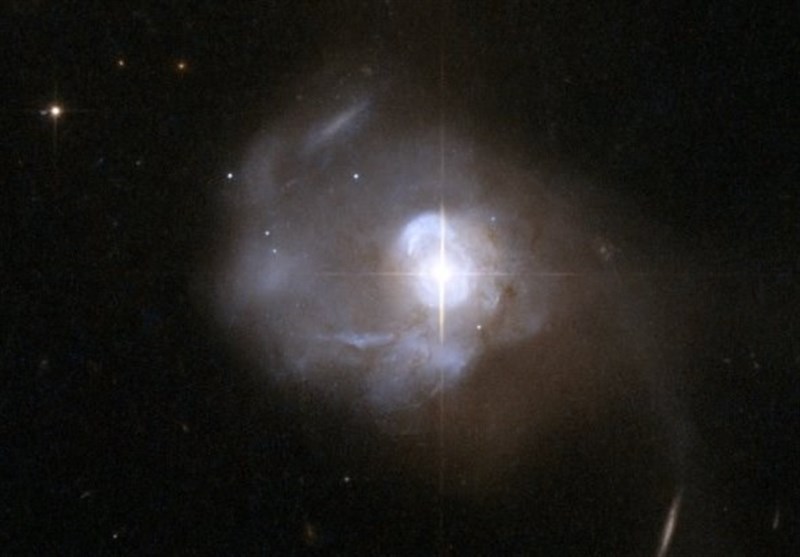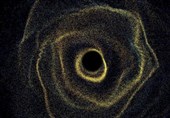Molecular Oxygen Detected in Another Galaxy for First Time
TEHRAN (Tasnim) – Astronomers have detected molecular oxygen in another galaxy over half a billion light-years away for the first time outside the Milky Way.
Oxygen is the third most abundant element in the Universe, behind hydrogen (naturally) and helium. So its chemistry and abundance in interstellar clouds are important for understanding the role of molecular gas in galaxies, Science Alert reported.
Astronomers have searched for oxygen again and again, using millimetre astronomy, which detects the radio wavelengths emitted by molecules; and spectroscopy, which analyses the spectrum to look for wavelengths absorbed or emitted by specific molecules.
But these searches have turned up a puzzling lack of oxygen molecules. Which means "a comprehensive picture of oxygen chemistry in different interstellar environments is still missing," wrote a team of astronomers led by Junzhi Wang of the Chinese Academy of Sciences in a new paper.
One place molecular oxygen has been detected is the Orion nebula; it's been hypothesised that out in space, oxygen is bound up with hydrogen in the form of water ice that is clinging to dust grains.
But the Orion nebula is a stellar nursery, and it's possible that the intense radiation from very hot young stars shocks the water ice into sublimation and splits the molecules, releasing the oxygen.
Which brings us to a galaxy called Markarian 231.
Markarian 231 is special. It's 561 million light-years away, and powered by a quasar. That's an extremely luminous galactic nucleus with an active supermassive black hole in the centre. They're the brightest objects in the Universe, and Markarian 231 contains the closest quasar to Earth.
In fact, astronomers think Markarian 231 might have two active supermassive black holes in its centre, whirling around each other at a furious rate.
An active galactic nucleus drives molecular outflows, producing continuous shocks of the kind that might release oxygen from water in molecular clouds. The molecular outflows in Markarian 231 are particularly high velocity, so Wang and colleagues went looking for oxygen.
Using the IRAM 30-metre radio telescope in Spain, they took observations of the galaxy for four days across a number of wavelengths. In those data, they found the spectral signature of oxygen, in line with the shock hypothesis.
"With deep observations toward Markarian 231 using the IRAM 30 meter telescope and NOEMA, we detected (molecular oxygen) emission in (an) external galaxy for the first time," the researchers wrote in their paper.
"The detected O2 emission is located in regions about 10 kpc (32,615 light-years) away from the center of Markarian 231 and may be caused by the interaction between the active galactic nucleus-driven molecular outflow and the outer disc molecular clouds."
The team's measurements revealed that the abundance of oxygen compared to hydrogen was around 100 times higher than that found in the Orion nebula, so the galaxy could be undergoing a more intense version of the same molecule-splitting process.
As Markarian is a starburst galaxy, undergoing furious star formation, this could be possible. Just one region in the galaxy is forming new stars at a rate of over 100 solar masses a year. The Milky Way, by contrast, is pretty quiet, with a star formation rate of around 1 to two solar masses.
On the other hand,these findings could also mean that more observations need to be taken to confirm that the astronomers are correct in interpreting their results as oxygen.
If the results hold, the phenomenon could be used to understand more about both molecular oxygen in galaxies, and the molecular outflow from an active galactic nucleus, the researchers said.
"This first detection of extragalactic molecular oxygen provides an ideal tool to study active galactic nucleus-driven molecular outflows on dynamic timescales of tens of megayears," they wrote.
"O2 may be a significant coolant for molecular gas in such regions affected by active galactic nucleus-driven outflows."






